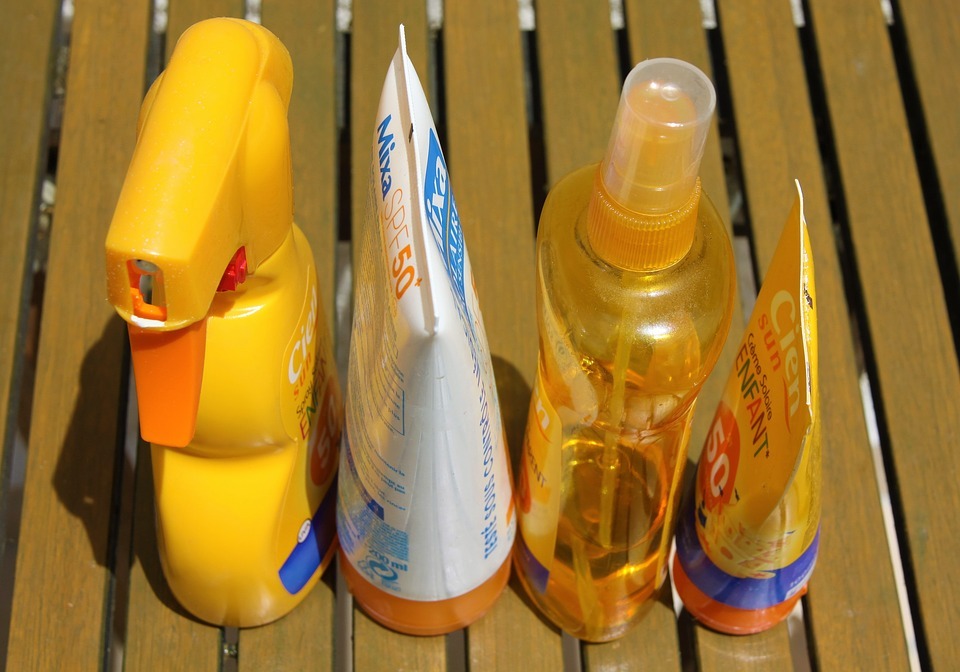Sunscreen is important especially to those who spend hours under the sun. It is also very essential during summer when we are going out for a swim because it can prevent us from being sunburned. But have you ever wondered how waterproof the sunscreen you’re using is?
Based on the new Food and Drug Administration’s (FDA) regulation in the USA, they no longer allow sunscreens labeled as ‘waterproof’. Sunscreens can only claim ‘Water-resistant’. This is because sunscreens can only protect our skins for a limited period of time once we are exposed to water. In this case, reapplying the sunscreen is needed after a swim or a good workout because the sunscreen has been washed away by water or by our sweat.
Levels of Water-Resistance
There are three levels of water-resistance claims which are determined by the water-resistance test. They are, ‘Not water resistant (SPF claim only)’, ‘Water-resistant to 40 minutes’ and ‘Water-resistant to 80 minutes’.
The test is done by applying the sunscreen, waiting for about 30 minutes, then immersing to water for a total of 80 minutes. This includes four 20-minute intervals in water followed by 15-minute rest intervals without towel drying. This test is done in an indoor circulating whirlpool with 23 to 32 degrees Celsius. After these, the subjects are asked to be exposed to the sun for sixteen to twenty-four hours, then they will return to the facility to be evaluated based on the skin reddening responses.
Sunscreen Labels
The US FDA had released new labels for sunscreens which are the broad spectrum claim and the low SPF warning. There are also other labels on sunscreens you must pay attention to such as the Sun Protection Factor or SPF, the water-resistant claim, the skin cancer foundation seal of recommendation, and the active ingredients.
- Broad Spectrum Claim: If the sunscreen has this label, it means that it can protect the skin against both UVB and UVA rays.
- Low SPF Warning: If the Sun Protection Factor of the sunscreen is lower than 15, there should be a warning stating that they can only protect the skin from sunburn but are not able to prevent skin cancer or skin aging.
- Sun Protection Factor: The SPF indicates how long a person can stay in the sun before the UVB rays start to burn the skin. Theoretically, an SPF 30 sunscreen will allow you to stay under the sun 30 times longer without getting sunburned. But it is still important to reapply sunscreen from time to time.
- Water-Resistant: The water-resistant claim, as well as sweat-resistant claim, indicates if the sunscreen can remain effective for 40 minutes or 80 minutes when you go swimming or when you’re sweating. Remember, FDA prohibits the term waterproof.
- The Skin Cancer Foundation Seal of Recommendation: Another thing you should look for on a sunscreen is the seal of recommendation from the skin cancer foundation. Products with this seal mean that they’ve gone through tests and it can assure you that it is safe and effective.
- Active Ingredients: You should also check the ingredients of the sunscreen. It is usually found at the back of the bottle. There are two main types of ingredients for sunscreen which are chemical and physical. Chemical ingredients work by absorbing UV, reducing its penetration to the skin. Physical ingredients, on the other hand, deflect UV rays. Most of the available sunscreens today have a combination of both chemical and physical ingredients.
Also, sunscreen products cannot overpromise. They are not allowed to say that it can last up to 2 hours without reapplying.
How to Apply Sunscreen
There are also certain ways to apply water-resistant sunscreens for it to take effect completely.
You should apply a liberal amount of sunscreen. Remember to apply it 15 minutes to 30 minutes before going on a swim. Also, make sure to apply some to your neck, hands, shoulders, and feet. These parts are usually forgotten and are prone to being sunburned.
Since sunscreens are not waterproof, another question is how often should it be applied? Well, this depends on the claim of your sunscreen if it’s 40 minutes or 80 minutes. But if you are using a towel to dry off during a break from swimming, you should reapply the sunscreen even without reaching the 40 to 80 minutes’ time limit.
So the next time you will be choosing your sunscreen, make sure to check the labels and claims on the package. If it states waterproof, don’t purchase it because it’s just overpromising and it is not approved by the FDA.


